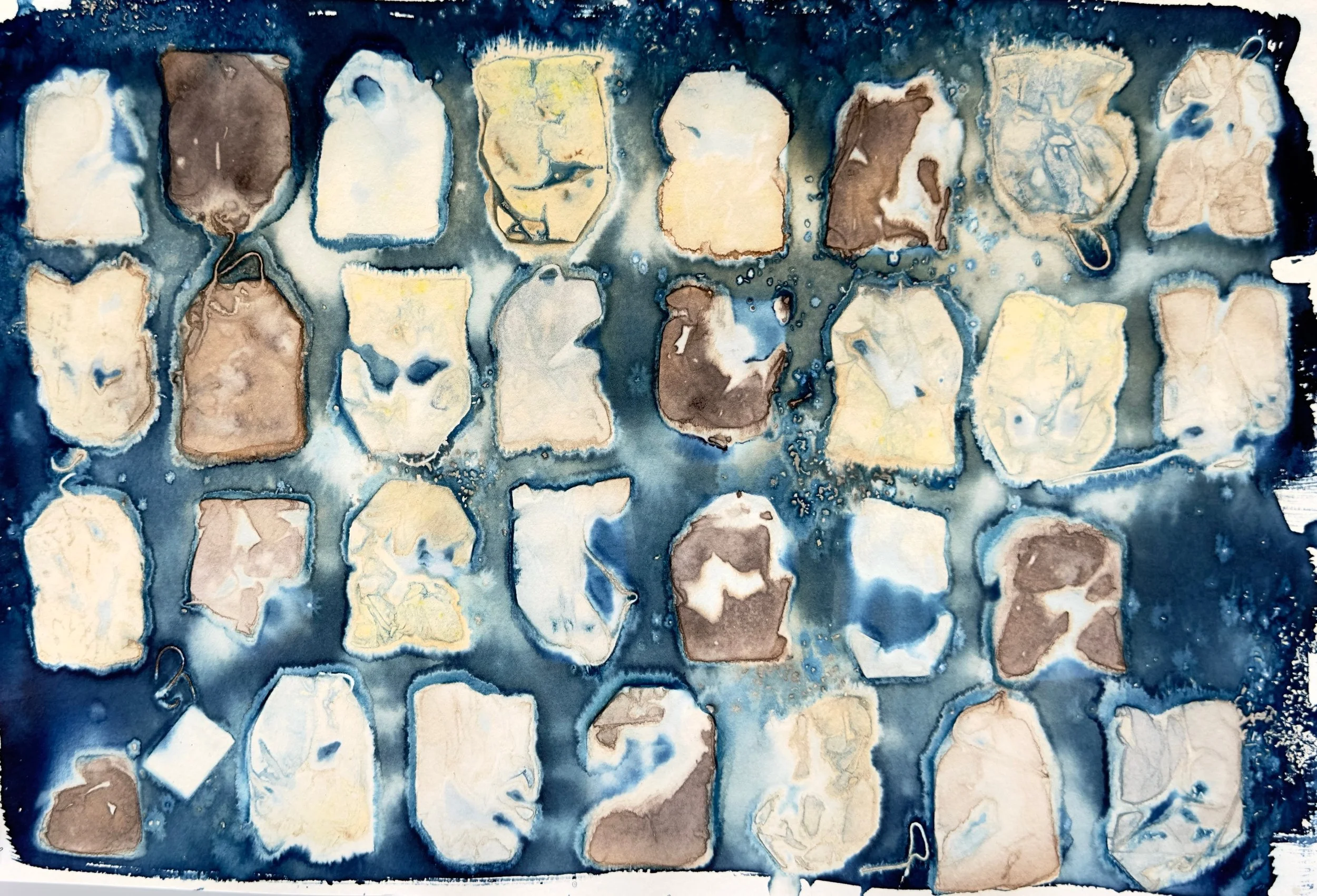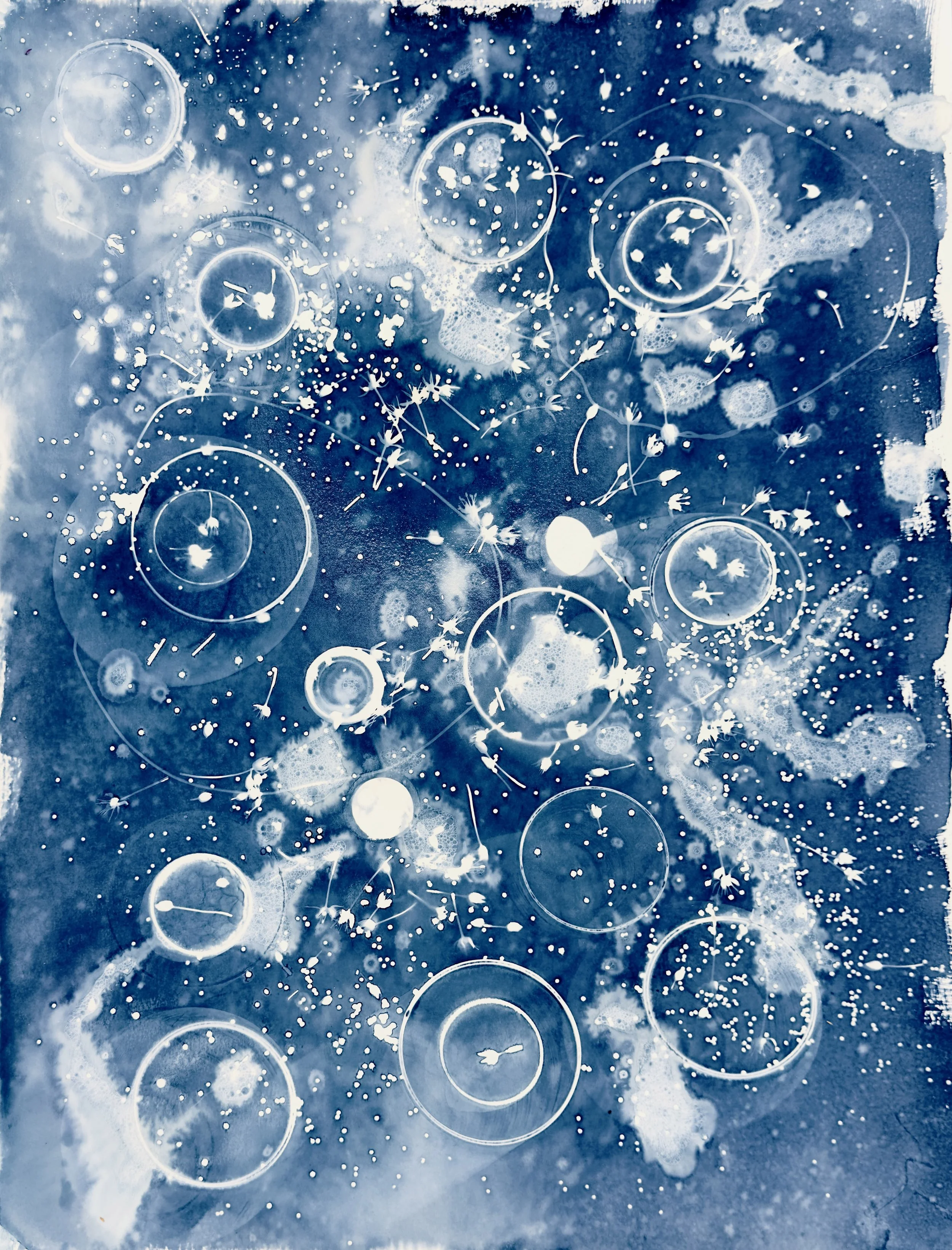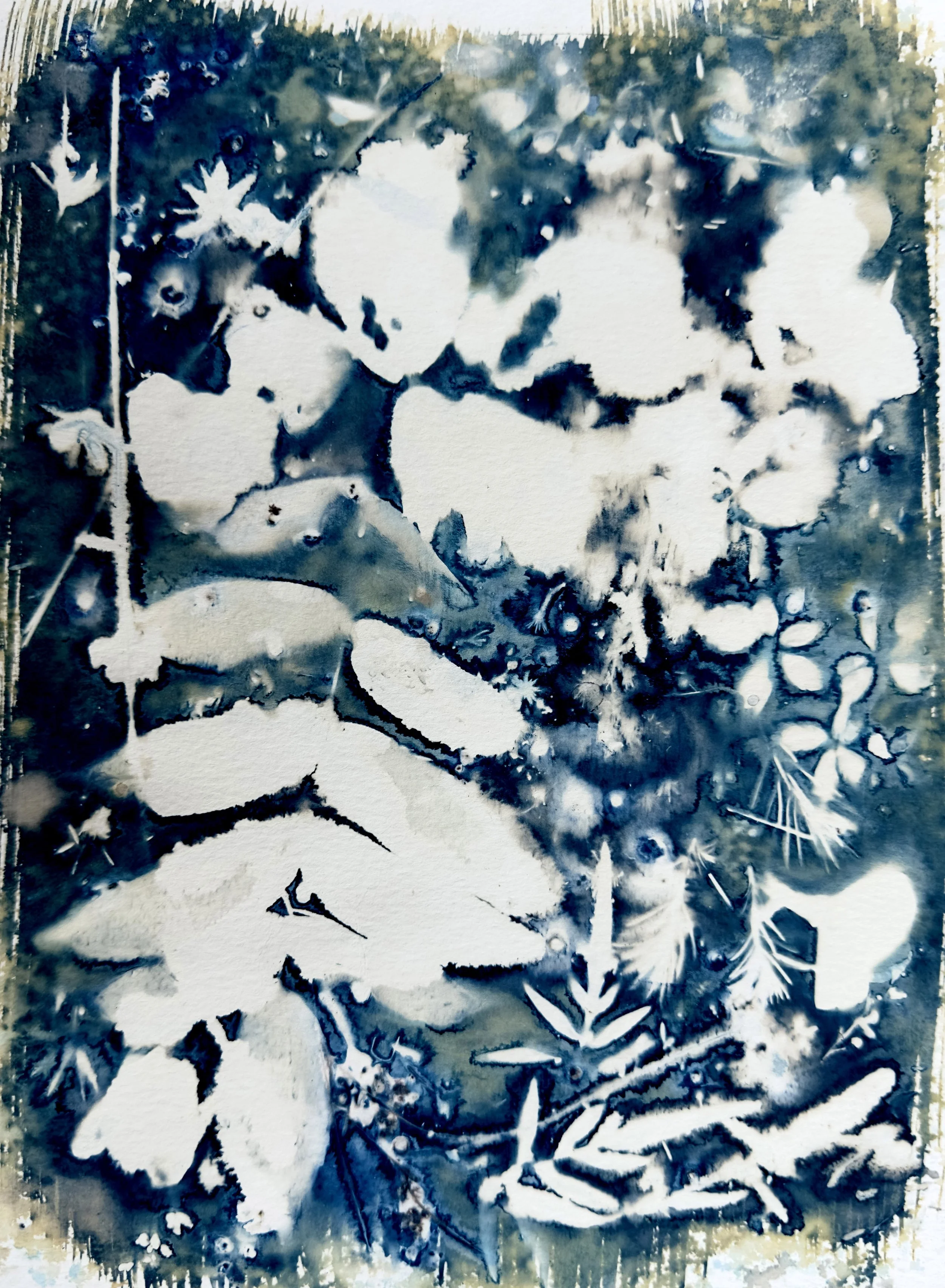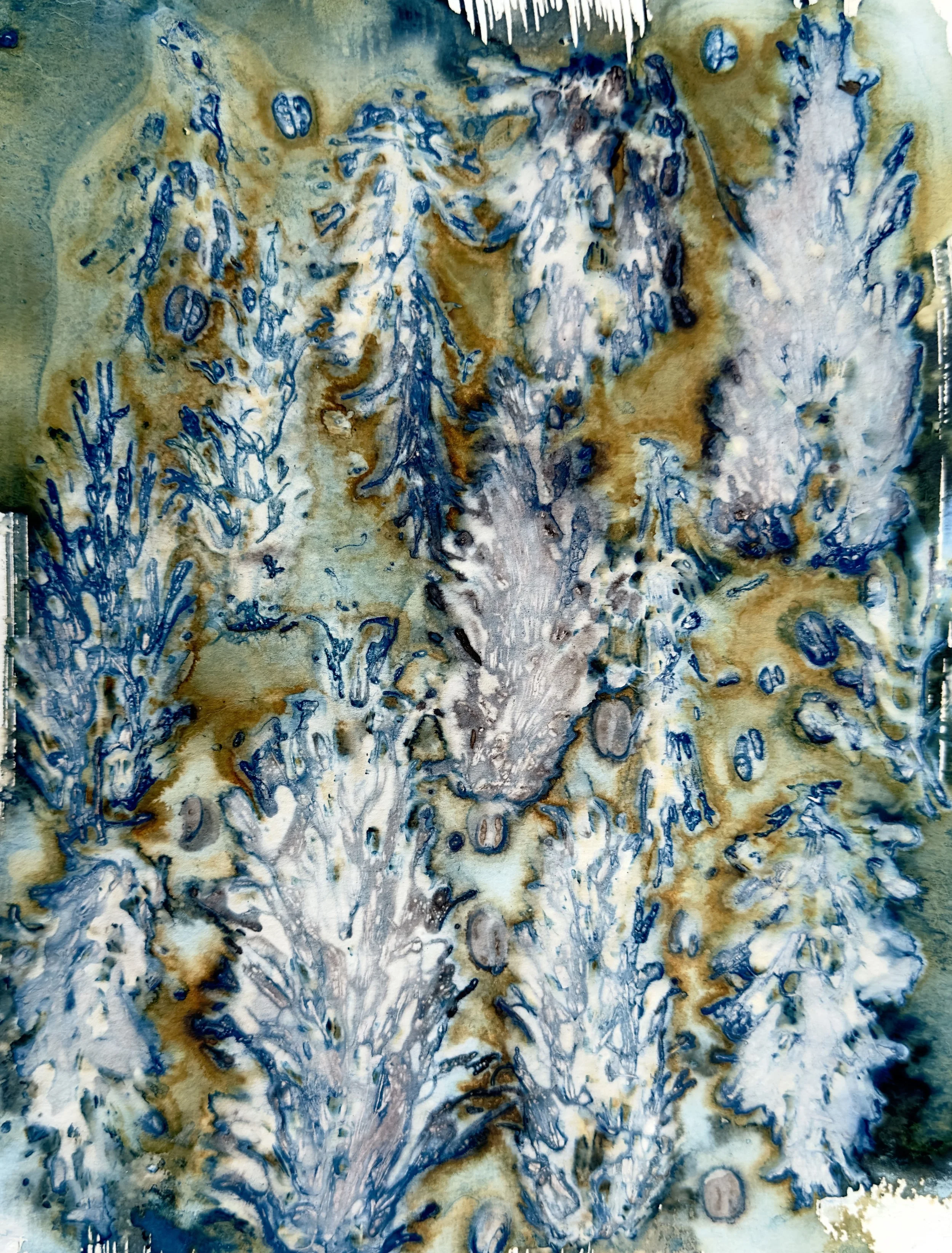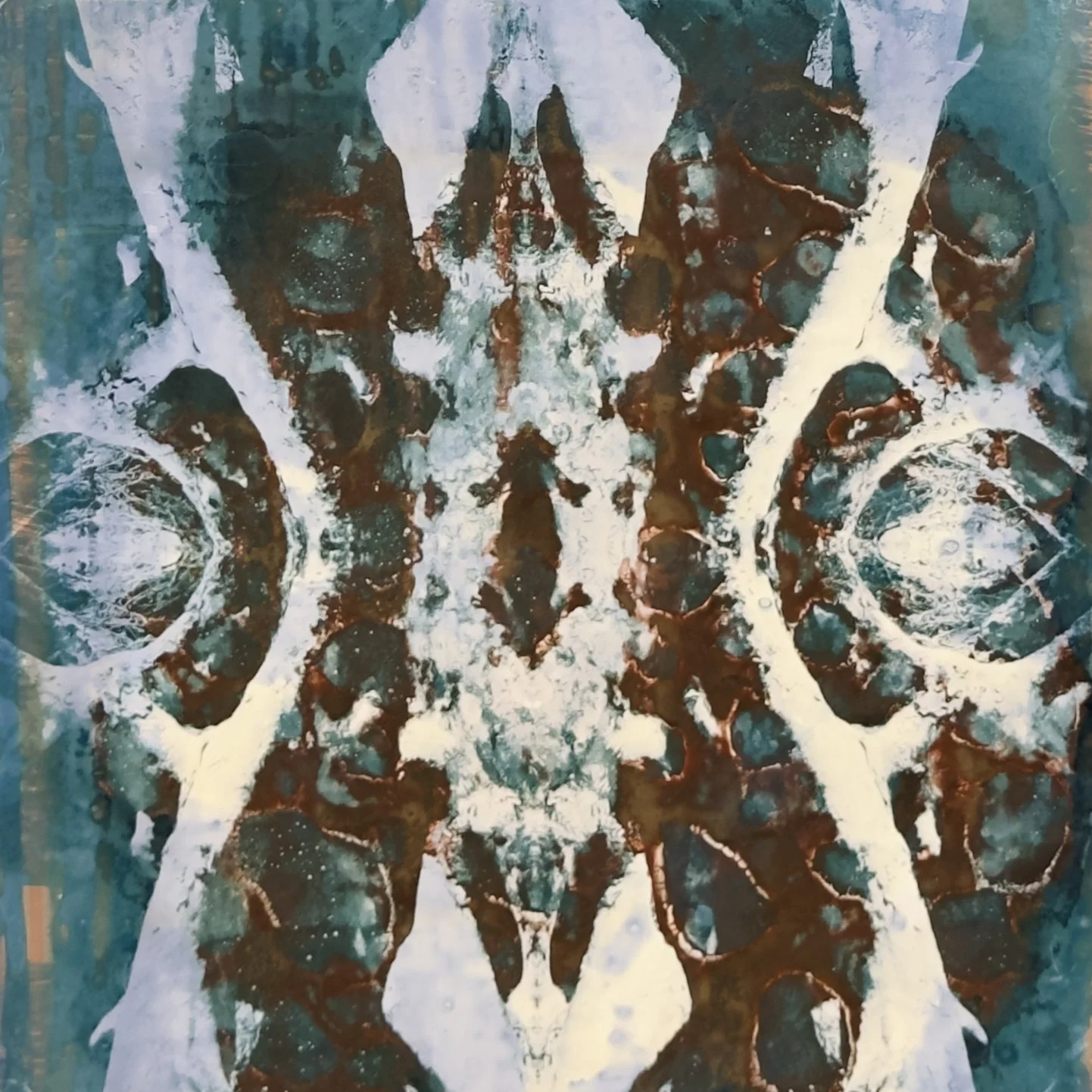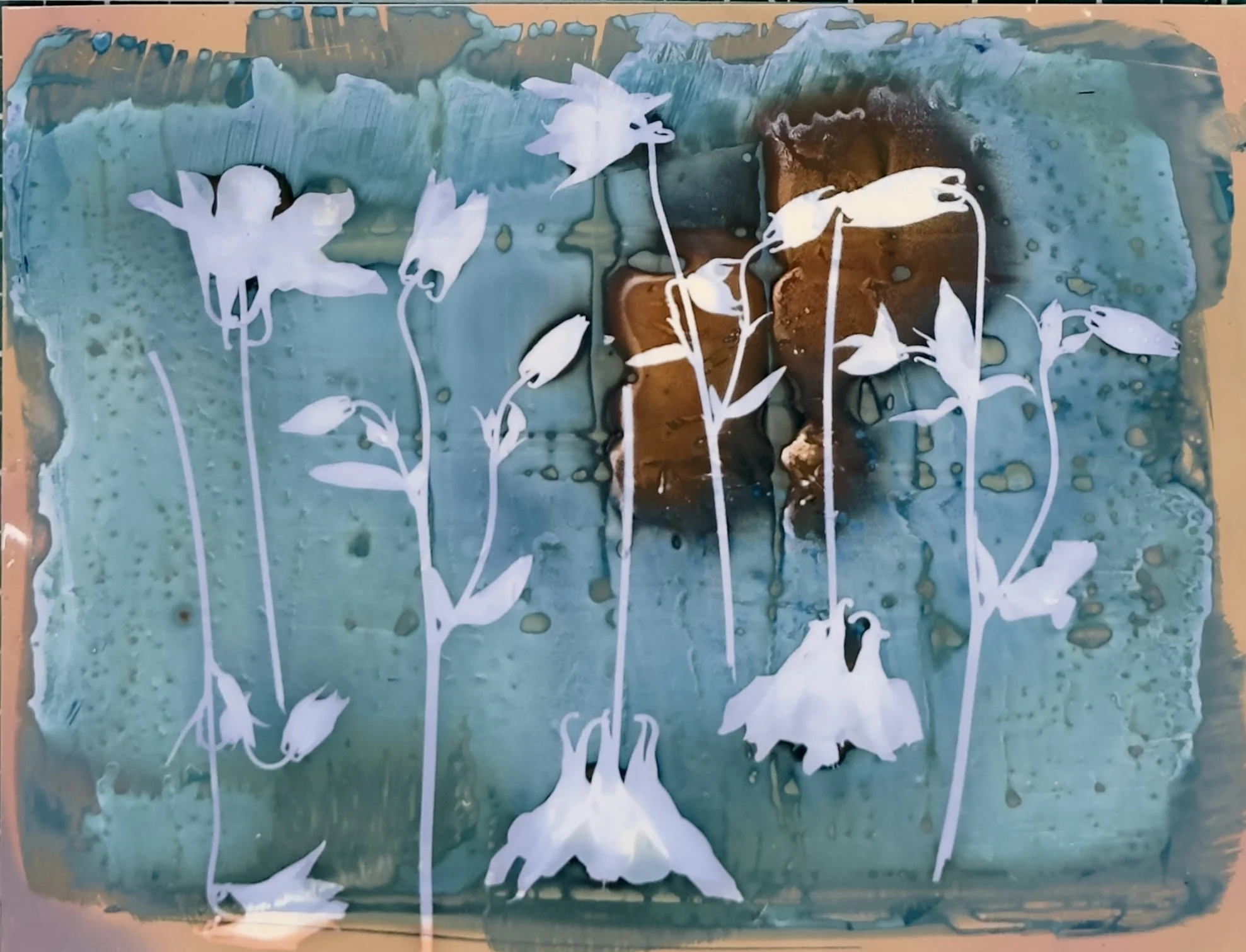In an era of dependence on AI-generated imagery, art that relies on collaboration with natural elements and yields unpredictable results is an act of resistance.
To make a cyanotype, a material such as paper or fabric is first coated with a light-sensitive salt solution or emulsion, unchanged since the mid-19th century. Next, in a dim environment objects are arranged on the now UV-sensitive medium. Then, when the composition is exposed to sunlight, a chemical reaction occurs changing the green emulsion to the characteristic blue, creating a unique monoprint.
In my work, I incorporate site-specific flora and fauna, bearing witness to a moment of time and space that can not be recreated.
- anna e schink
This will be useful someday / mixed media cyanotype / Indianapolis / 18" x 24"
thé / 8 hour cyanotype / indianapolis / 12" x 18"
11:11 / cyanotype / indianapolis / 18" x 24"
scattered along the path / cyanotype / providence / 8" x 12"
pinecones / cyanotype / providence / 8" x 12"
too easily scared / cyanolumen / 8" x 8"
seaweed : impatience / cyanotype / providence / 8" x 12" each
places the light can't touch / cyanotype / providence / 8" x 12"
the air i breathe / cyanotype on found shell / providence / 4.5" x 6"
columbine / cyanolumen / 9" x 12"
put all the stars to death / cyanotype / indianapolis / 18" x 24"
that creeping sense of dread / cyanolumen / 9" x 12"
not too easily scared / cyanolumen / 8" x 8"
learned to lose you / cyanolumen / 5" x 7"
wish I never met you / cyanolumen / 18" x 24"
hi biscus / cyanotype / providence / 9" x 12"


